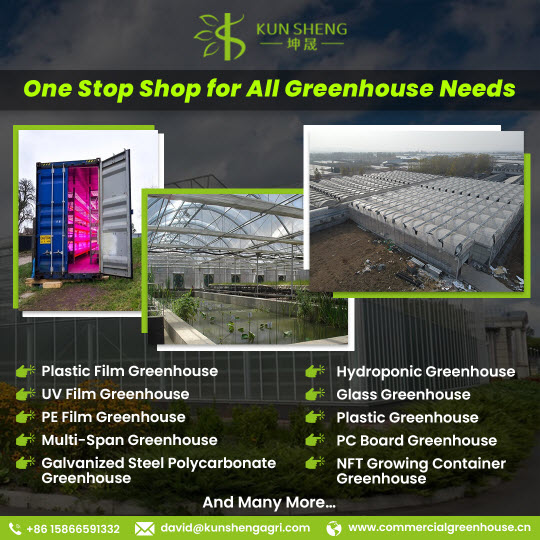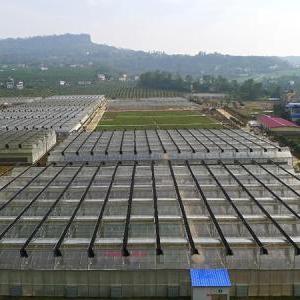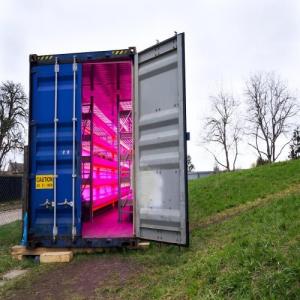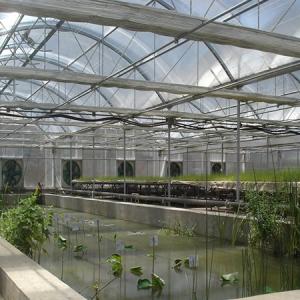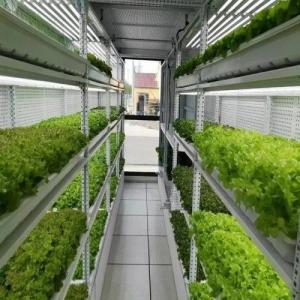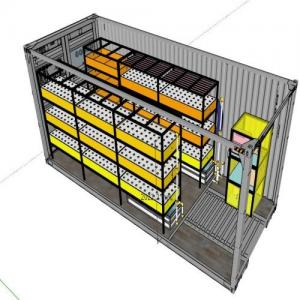Technological Innovations in Commercial Greenhouse Farming in the UAE
Commercial Greenhouse Farming in the UAE
Commercial greenhouse farming in the UAE is a thriving sector that plays a crucial role in sustainable agriculture and food production. This innovative method of cultivation harnesses controlled environments to overcome the limitations of traditional farming methods and ensure optimal crop growth.
In commercial greenhouse farming, crops are cultivated within enclosed structures that allow for precise control of environmental factors such as temperature, humidity, and light. This controlled environment creates favorable conditions for plant growth throughout the year, regardless of external weather fluctuations.
The UAE, with its arid climate and limited arable land, has embraced commercial greenhouse farming as a solution to meet the growing demand for fresh produce. By utilizing advanced technologies and sustainable practices, this farming method enables year-round production of high-quality crops, reducing the reliance on imports and promoting food security.
One of the key advantages of commercial greenhouse farming is its ability to conserve resources. By optimizing water usage through efficient irrigation systems and recycling techniques, greenhouse farmers minimize water wastage and contribute to the conservation of this precious resource.
Moreover, the controlled environment of commercial greenhouses allows for precise pest and disease management, reducing the need for chemical pesticides and promoting environmentally friendly practices. This not only ensures the production of healthier, pesticide-free crops but also minimizes the impact on surrounding ecosystems.
Commercial greenhouse farming also enables vertical farming techniques, where crops are grown in stacked layers, maximizing land utilization and significantly increasing the yield per square meter. This vertical approach is particularly beneficial in urban areas where land availability is limited.
The UAE government has been actively supporting the growth of commercial greenhouse farming through initiatives and incentives. These include financial assistance, research and development grants, and training programs to enhance the skills of farmers in greenhouse management and advanced cultivation techniques.
In short, commercial greenhouse farming in the UAE is a sustainable and innovative solution to address the challenges of traditional farming methods. By harnessing controlled environments, this method optimizes crop growth, conserves resources, and promotes year-round production of high-quality, locally grown produce. With ongoing government support and continuous technological advancements, commercial greenhouse farming is set to play a vital role in ensuring food security and sustainable agriculture in the UAE.
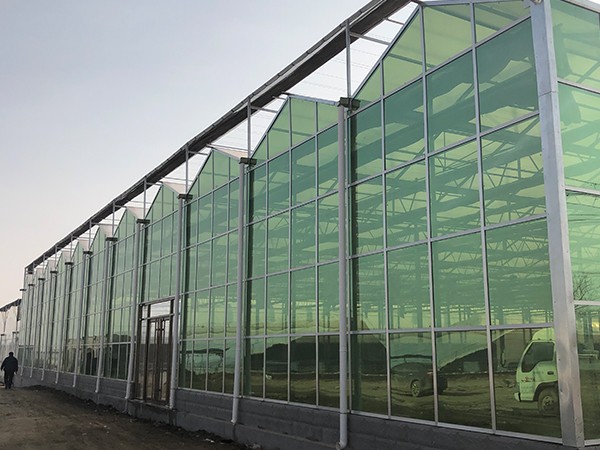
2. Advancements in Greenhouse Structures and Materials
The field of greenhouse farming has witnessed remarkable advancements in recent years, particularly in greenhouse structures and materials. These innovative designs and high-performance materials have revolutionized modern greenhouse construction, leading to enhanced energy efficiency, improved crop yield, and optimal growing conditions for a wide range of crops.
1. Greenhouse Structures: Modern greenhouse structures now incorporate innovative designs that maximize functionality and efficiency. From traditional hoop houses to more complex Venlo and multi-span designs, these structures offer increased durability, better airflow management, and improved space utilization.
2. Greenhouse Materials: The materials used in greenhouse construction have also evolved significantly. High-performance materials, such as polycarbonate panels, are increasingly replacing traditional glass due to their superior insulation properties, impact resistance, and light transmission capabilities. These materials provide a more controlled and favorable environment for plant growth.
3. Innovative Designs: Architects and engineers have developed innovative greenhouse designs that optimize natural light distribution and airflow. This includes the use of ridge vents, side vents, and automated shading systems that regulate temperature, humidity, and light levels. Such designs allow for efficient ventilation and minimize the risk of plant stress or diseases caused by stagnant air.
4. Energy Efficiency: Energy efficiency has become a focal point in greenhouse design. Insulated materials, such as double-layered polyethylene films and energy-efficient glazing, help to reduce heat loss during colder seasons and minimize heat gain during hotter periods. Additionally, the integration of energy-saving technologies like solar panels and energy-efficient heating and cooling systems further reduces reliance on conventional energy sources.
5. Improved Crop Yield: The advancements in greenhouse structures and materials directly contribute to improved crop yield. The controlled environment created by these innovations allows farmers to optimize factors like temperature, humidity, and light intensity, resulting in accelerated plant growth, increased productivity, and higher crop quality. This enables year-round cultivation and extends growing seasons, ensuring a consistent supply of fresh produce.
6. Optimal Growing Conditions: The use of advanced greenhouse structures and materials helps create optimal growing conditions for different crops. The flexibility in design allows for customization based on the specific requirements of various plants, including temperature, humidity, and light levels. This precision control enables the cultivation of crops that are otherwise challenging to grow in the local climate, expanding the variety of produce available to consumers.
The advancements in greenhouse structures and materials have revolutionized modern farming practices. The incorporation of innovative designs and high-performance materials has resulted in enhanced energy efficiency, improved crop yield, and the creation of optimal growing conditions. As these advancements continue, the future of greenhouse farming holds great promise for increased sustainability, productivity, and the ability to meet the demands of a growing population while minimizing environmental impact.
3. Automation and Robotics in Greenhouse Farming
Automation and robotics have revolutionized greenhouse farming practices, bringing about significant transformations in the industry. The integration of automation systems and robotics in commercial greenhouses has enabled the adoption of precision farming techniques, leading to increased labor efficiency, precise crop monitoring, and enhanced productivity.
1. Greenhouse Automation: Greenhouse automation systems encompass a range of technologies that streamline and automate various tasks involved in crop cultivation. This includes automated climate control systems, irrigation systems, nutrient delivery systems, and pest management systems. By automating these processes, farmers can maintain optimal growing conditions with minimal manual intervention, reducing labor requirements and ensuring consistent crop quality.
2. Robotics in Greenhouses: Robotics is playing an increasingly important role in greenhouse farming. Robots are employed for tasks such as seeding, transplanting, pruning, harvesting, and crop maintenance. These robots are equipped with specialized tools and sensors that enable them to perform precise and repetitive tasks with accuracy and efficiency. By taking over labor-intensive operations, robots not only reduce the need for human involvement but also ensure consistent and standardized procedures.
3. Precision Farming: Automation and robotics enable precision farming techniques in greenhouses. With the help of sensors, cameras, and monitoring systems, farmers can collect real-time data on factors such as temperature, humidity, light intensity, soil moisture, and nutrient levels. This data allows for precise adjustments in crop management, optimizing resource usage and ensuring that plants receive exactly what they need for optimal growth. Precision farming minimizes waste, enhances crop quality, and maximizes productivity.
4. Labor Efficiency: Automation and robotics significantly improve labor efficiency in greenhouse farming. By automating repetitive tasks and delegating them to robots, human workers can focus on more skilled and complex activities. This not only reduces the need for manual labor but also minimizes the risk of human error. As a result, farmers can allocate their workforce more efficiently, increasing overall productivity and reducing operational costs.
5. Crop Monitoring: Automation and robotics facilitate precise and continuous crop monitoring. Sensors and imaging systems capture data on plant health, growth rates, and pest infestations. This real-time information enables early detection and intervention, preventing crop losses and optimizing resource allocation. Farmers can make data-driven decisions regarding irrigation, fertilization, and pest control, resulting in improved crop quality and higher yields.
In conclusion, the integration of automation systems and robotics in greenhouse farming has brought about significant advancements in precision farming techniques. By leveraging these technologies, farmers can achieve increased labor efficiency, precise crop monitoring, and enhanced productivity. As automation and robotics continue to evolve, greenhouse farming is poised to become even more efficient, sustainable, and capable of meeting the demands of a growing population while minimizing environmental impact.
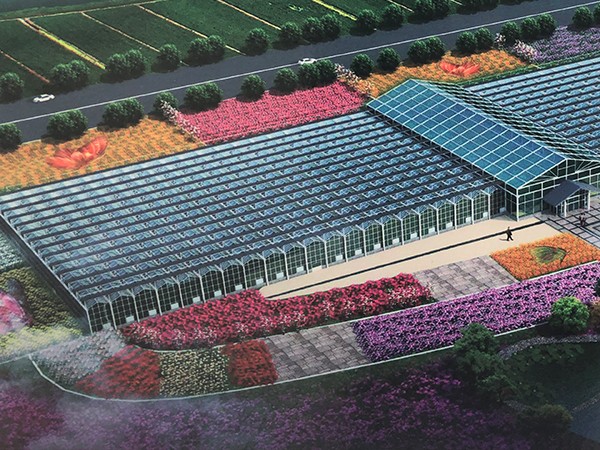
4. Climate Control and Environmental Management
Maintaining optimal climate conditions is essential for the success of greenhouse farming. In this section, we will delve into the advancements in climate control and environmental management techniques utilized in commercial greenhouses. We will discuss the role of HVAC systems, CO2 enrichment, humidity control, and the utilization of sensors and data analysis to optimize growing conditions.
1. HVAC Systems: Heating, ventilation, and air conditioning (HVAC) systems play a crucial role in controlling the temperature and airflow within greenhouses. Advanced HVAC systems utilize technologies such as evaporative cooling, radiant heating, and energy-efficient insulation to maintain stable and favorable climate conditions. These systems can be automated and integrated with sensors to adjust temperature settings based on real-time data.
2. CO2 Enrichment: Carbon dioxide (CO2) enrichment is employed to enhance photosynthesis and promote plant growth. Controlled release of CO2 within greenhouses supplements the naturally available atmospheric CO2 levels. This technique improves the rate of photosynthesis, resulting in higher crop yields. Monitoring and maintaining optimum CO2 levels are crucial for maximizing the efficiency of this process.
3. Humidity Control: Humidity control is critical for preventing excessive moisture buildup or drying in the greenhouse environment. High humidity can lead to the development of diseases, while low humidity can cause plant stress and hinder growth. Advanced greenhouse systems incorporate humidity control mechanisms such as misting systems, foggers, and dehumidifiers to maintain the ideal humidity levels for different crops.
4. Sensors and Data Analysis: Sensors are utilized in commercial greenhouses to gather data on various environmental factors such as temperature, humidity, light intensity, and soil moisture. These sensors continuously monitor the conditions and provide real-time data. Data analysis techniques, including machine learning and predictive modeling, are then employed to interpret this information and optimize climate control settings accordingly. By leveraging data-driven insights, farmers can make informed decisions to create the most favorable conditions for plant growth.
Efficient climate control and environmental management in commercial greenhouses ensure that crops receive the optimal conditions for growth, leading to improved yields, crop quality, and resource utilization. These advancements in HVAC systems, CO2 enrichment, humidity control, and data-driven analysis contribute to sustainable and productive greenhouse farming practices.
In brief, the advancements in climate control and environmental management techniques have revolutionized commercial greenhouse farming. The integration of advanced HVAC systems, CO2 enrichment, humidity control mechanisms, and data-driven analysis enables farmers to maintain precise control over the greenhouse environment. By optimizing temperature, CO2 levels, and humidity, farmers can create ideal growing conditions for different crops, resulting in higher yields and improved crop quality. These advancements contribute to the sustainability and efficiency of greenhouse farming practices, ensuring the production of high-quality crops while minimizing resource usage.
5. Smart Irrigation and Water Management
Efficient water management is a crucial aspect of sustainable greenhouse farming. In this section, we will explore the utilization of smart irrigation systems and advanced water management techniques in commercial greenhouses. We'll discuss the benefits of precision watering, water conservation measures, and the integration of sensors and data analysis to optimize irrigation practices.
1. Smart Irrigation Systems: Smart irrigation systems utilize technology and automation to deliver water precisely where and when it is needed. These systems incorporate sensors, weather data, and soil moisture monitoring to determine the exact irrigation requirements of plants. By adjusting water delivery based on real-time data, smart irrigation systems prevent overwatering and ensure that plants receive the optimal amount of water for their growth.
2. Precision Watering: Precision watering is a key feature of smart irrigation systems. By targeting water directly to the root zones of plants, precision watering minimizes water wastage through evaporation or runoff. This technique also reduces weed growth and enables more efficient nutrient uptake, resulting in healthier plants and improved crop yields.
3. Water Conservation Measures: Commercial greenhouses implement various water conservation measures to reduce water usage. These measures include the collection and reuse of water through rainwater harvesting or condensate recovery systems. Additionally, technologies like drip irrigation and micro-sprinklers deliver water directly to the plants, minimizing losses due to evaporation and wind drift.
4. Integration of Sensors and Data Analysis: Sensors placed in the greenhouse monitor soil moisture levels, humidity, and environmental conditions. The data collected by these sensors is analyzed using advanced algorithms and data analysis techniques. By interpreting this information, farmers can make informed decisions regarding irrigation schedules and water application rates. This integration of sensors and data analysis ensures that water is used efficiently, minimizing waste and maximizing the productivity of greenhouse crops.
Efficient smart irrigation and water management practices in commercial greenhouses offer several benefits. They reduce water consumption, lower operational costs, and contribute to sustainable farming practices. Additionally, optimized water delivery helps prevent water stress and improves the overall health and quality of plants.
In conclusion, the utilization of smart irrigation systems and advanced water management techniques in commercial greenhouses is crucial for sustainable and efficient farming practices. Precision watering, water conservation measures, and the integration of sensors and data analysis play a significant role in optimizing water usage and ensuring the well-being of greenhouse crops. By implementing these technologies, farmers can conserve water resources, enhance crop productivity, and contribute to the overall sustainability of greenhouse farming.
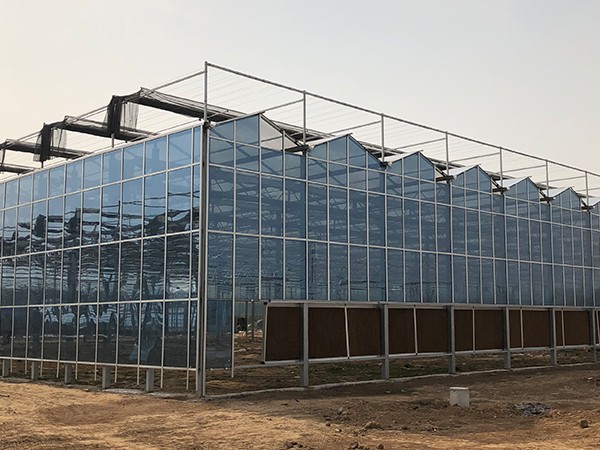
6. Energy-Efficient Lighting Solutions in Commercial Greenhouse
Lighting is a crucial factor in the growth and development of plants within commercial greenhouses. In this section, we will explore the advancements in energy-efficient lighting solutions, with a specific focus on LED lighting technology. We'll discuss how optimizing the light spectrum and enhancing photosynthetic efficiency contribute to energy savings and improved crop production.
1. Energy-Efficient LED Lighting: LED (Light-Emitting Diode) lighting has revolutionized the greenhouse industry with its energy-efficient properties. LED lights consume significantly less energy compared to traditional lighting sources such as fluorescent or high-pressure sodium lights. This energy efficiency translates into substantial cost savings and reduced environmental impact.
2. Optimized Light Spectrum: LED lighting allows for precise control over the light spectrum, enabling growers to tailor the lighting conditions to the specific needs of their crops. By adjusting the ratio and intensity of red, blue, and other wavelengths, growers can provide the optimal light spectrum for each growth stage of the plants. This customization enhances photosynthetic efficiency and promotes healthier plant growth.
3. Enhanced Photosynthetic Efficiency: LED lights emit light in specific wavelengths that closely match the photosynthetically active radiation (PAR) required by plants. This targeted approach ensures that plants receive the ideal light for photosynthesis, resulting in higher photosynthetic efficiency. Enhanced photosynthetic efficiency leads to improved plant growth, faster development, and higher crop yields.
4. Energy Savings: LED lighting systems offer significant energy savings compared to traditional lighting sources. Their low energy consumption, coupled with the ability to customize the light spectrum, reduces wastage of energy in the form of unnecessary light wavelengths. This translates into lower electricity bills and reduced carbon footprint for greenhouse operations.
5. Longer Lifespan and Durability: LED lights have a longer lifespan compared to traditional lighting options, resulting in reduced maintenance costs and fewer replacements. LED lights are also more resistant to vibrations, temperature fluctuations, and environmental conditions, making them well-suited for greenhouse environments.
6. Controlled Lighting Strategies: LED lighting can be easily integrated with automation systems and controlled lighting strategies. This allows growers to implement specific lighting schedules and intensity levels tailored to the needs of different crops. By utilizing light sensors and timers, growers can ensure consistent and optimal lighting conditions for their plants.
In conclusion, energy-efficient lighting solutions, particularly LED technology, have transformed commercial greenhouse operations. The ability to optimize the light spectrum and enhance photosynthetic efficiency contributes to significant energy savings and improved crop production. By adopting energy-efficient LED lighting, growers can reduce operational costs, minimize environmental impact, and achieve better control over plant growth and development. As LED technology continues to advance, it holds great promise for the future of energy-efficient lighting in commercial greenhouse farming.
7. Data Analytics and AI in Greenhouse Farming
Data analytics and artificial intelligence (AI) have brought about a transformative impact on greenhouse farming practices. In this section, we will explore how data analytics, machine learning, and predictive modeling are employed in commercial greenhouses to gain valuable insights and make informed decisions. We'll discuss their applications in crop yield prediction, disease detection, and resource optimization.
1. Data Collection and Analysis: Commercial greenhouses utilize various sensors and data collection systems to gather information on environmental factors, plant health, and growth parameters. These data points are analyzed using advanced analytics techniques to identify patterns, trends, and correlations that provide valuable insights for decision-making.
2. Machine Learning and Predictive Modeling: Machine learning algorithms are employed to analyze the collected data and build predictive models. These models can forecast crop growth, yield, and other key parameters based on historical and real-time data. By training models on large datasets, machine learning enables accurate predictions and assists growers in making proactive decisions.
3. Crop Yield Prediction: Data analytics and AI algorithms can predict crop yields by considering factors such as environmental conditions, nutrient levels, and cultivation practices. By analyzing historical data and real-time inputs, predictive models can estimate future yields. This helps growers optimize production planning, manage inventory, and make informed decisions regarding pricing and supply chain management.
4. Disease Detection and Prevention: Data analytics and AI play a crucial role in disease detection and prevention in commercial greenhouses. By analyzing data on environmental conditions, plant health, and disease symptoms, algorithms can identify early warning signs of potential diseases. This enables growers to take timely action, such as adjusting environmental parameters, implementing targeted treatments, or quarantine measures, to prevent disease spread and minimize crop losses.
5. Resource Optimization: Data analytics and AI algorithms help optimize resource usage in commercial greenhouses. By analyzing factors such as water usage, energy consumption, and nutrient application, algorithms can identify inefficiencies and recommend adjustments. This ensures the optimal utilization of resources, reduces waste, and enhances sustainability in greenhouse operations.
6. Decision Support: Data analytics and AI provide decision support tools for greenhouse growers. By integrating data from various sources and applying advanced analytics techniques, growers can make informed decisions regarding crop selection, planting strategies, and cultivation practices. AI-driven decision support systems empower growers to respond to dynamic conditions and optimize their operations for improved outcomes.
In conclusion, data analytics and AI have revolutionized greenhouse farming practices. By leveraging machine learning, predictive modeling, and data-driven insights, commercial greenhouses can enhance crop yield prediction, disease detection, and resource optimization. These technologies empower growers to make informed decisions, maximize productivity, and operate in a more sustainable and efficient manner. As data analytics and AI continue to advance, their role in greenhouse farming is set to expand, driving further innovation and advancements in the industry.
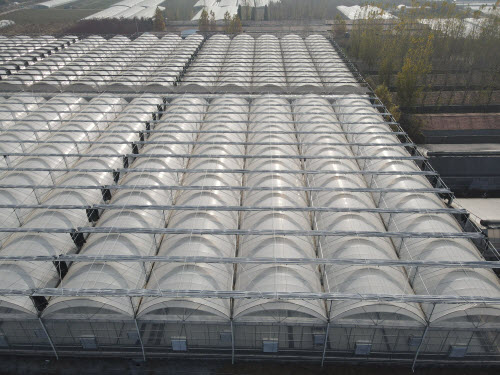
8. Future Prospects and Challenges in Greenhouse Farming
The future of greenhouse farming in the UAE holds promising prospects for sustainable food production. Technological advancements and innovative practices are expected to shape the industry in the coming years. However, several challenges need to be addressed to maximize the benefits of commercial greenhouse farming.
Future Prospects:
1. Technological Advancements: Continuous technological advancements will play a vital role in the future of greenhouse farming. Innovations such as advanced climate control systems, robotics, automation, AI, and data analytics will further optimize resource usage, increase crop yields, and enhance overall efficiency. These advancements will contribute to sustainable and high-quality food production.
2. Year-round Production: Greenhouse farming enables year-round crop production, irrespective of external weather conditions. This aspect offers significant advantages, ensuring a consistent supply of fresh produce and reducing dependence on imports. With the integration of advanced greenhouse technologies, the UAE can enhance its self-sufficiency in food production.
3. Sustainable Food Production: Greenhouse farming is inherently sustainable, as it minimizes water usage, reduces chemical inputs, and optimizes resource utilization. By adopting eco-friendly practices, such as integrated pest management, organic fertilizers, and renewable energy sources, greenhouse farming contributes to sustainable food production, addressing environmental concerns and promoting food security.
4. Crop Diversity and Local Demand: Greenhouse farming allows for the cultivation of a wide range of crops, including those not traditionally grown in the UAE due to the arid climate. This diversity caters to local demand for fresh produce, reduces reliance on imports, and promotes a diverse and nutritious diet for consumers.
Challenges:
1. Initial Investment Cost: Establishing a commercial greenhouse requires a significant initial investment, including construction, infrastructure, advanced technologies, and skilled labor. Access to financing options and government support will be crucial in overcoming this challenge.
2. Skill Development: The successful operation of commercial greenhouses requires skilled labor with expertise in greenhouse management, advanced technologies, and cultivation techniques. Investing in training programs and education to enhance the skillset of greenhouse farmers will be essential for future growth.
3. Regulatory Compliance: Ensuring compliance with regulations and standards related to food safety, environmental sustainability, and worker safety is vital for greenhouse farming. Collaboration between industry stakeholders and government bodies is necessary to establish appropriate guidelines and frameworks.
4. Market Demand and Competition: Meeting the evolving market demand and remaining competitive amidst local and global competition pose challenges for greenhouse farmers. Understanding consumer preferences, market trends, and exploring niche markets will be crucial for long-term success.
The future prospects of greenhouse farming in the UAE are bright. Technological advancements, sustainable practices, and year-round production capabilities offer opportunities for enhanced food security, increased self-sufficiency, and sustainable agriculture. However, addressing challenges related to investment costs, skill development, regulatory compliance, and market demands is essential. By overcoming these challenges, the UAE can establish itself as a leader in sustainable greenhouse farming, contributing to a resilient food system and a greener future.
By incorporating these technological innovations, commercial greenhouse farming in the UAE can continue to revolutionize the agricultural landscape. With sustainable practices, controlled environments, and advanced systems, farmers can achieve higher crop yields, minimize resource consumption, and reduce environmental impact. However, there are still challenges to overcome, such as the initial investment cost, training requirements for adopting new technologies, and ensuring regulatory compliance. Despite these challenges, the future of commercial greenhouse farming in the UAE looks promising, with the potential to play a significant role in ensuring food security, supporting local economies, and promoting sustainable agriculture practices.
In conclusion, the integration of technological innovations in commercial greenhouse farming in the UAE has ushered in a new era of sustainable agriculture. From advancements in greenhouse structures and materials to the use of automation, robotics, and data analytics, these technologies have transformed the way crops are grown. By leveraging precise control over climate, irrigation, and lighting, farmers can optimize conditions for crop growth and maximize productivity. As the industry continues to evolve, it is essential for stakeholders to collaborate, invest in research and development, and embrace these innovations to ensure a prosperous and sustainable future for commercial greenhouse farming in the UAE.
